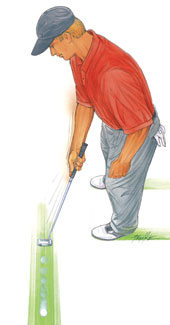Fishing line technology has certainly seen many advances throughout the ages. Long gone are the days of tying together strands of plant fibre or “cat gut” to get your hook sufficiently far away from the tip of your rod and into the water. Today you have whole sections of stores, and categories of websites devoted to this most basic of fishing tools. It is still, however, an important ingredient in your fishing outfit. For if you don’t have any fishing line you aren’t really fishing are you? You’re just standing there waving a long stick around, looking sort of silly!
The object of this article is to enlighten the reader to the varying types of fishing lines available on today’s market. To highlight the differences between the several common types you are most likely to have seen or heard about. Finally, to provide some insight into which of these types will be suited to your style of fishing, and ways to find the product that will provide the best value for your fishing dollar.
There a three main types of line that will be discussed; monofilament, fluorocarbon and braid. Of course there are other types such as fly lines, both floating and sinking. For the average fisherman, the aforementioned group of three are the most common available, and the most likely to be used in everyday angling pursuits. All three have their strong points and weak points and as such can be used to the angler’s advantage if he knows what situation best dictates the use of which line.
Monofilament has been, by far, the line of choice for most fishermen for quite some time. This robust, general purpose line is constructed of a single strand of plastic. It is very cheap to produce, which makes it easy on the angler’s wallet. Mono comes in a variety of colours and strengths rendering it quite a versatile product. This form of line is widely available, any tackle store worth their salt will have a healthy range of Mono, general stores and service stations close to fishing waters will usually have some too should an angling emergency come about.
One feature of monofilament is its low visibility; it is harder to see underwater than say a braided line, which is always helpful when trying entice a wary species of fish. It is reasonably tough, being resistant to a moderate amount of abrasion or bites from toothy sea creatures. Monofilament has a good amount of stretch. This can be viewed as a good point or otherwise depending on the situation. Some elasticity in your line can be advantageous in certain situations e.g. When wrestling with a larger fish than the line is rated for and the said fish makes a sudden movement or jerk, the elastic properties of the monofilament provide some protection from line breakages, especially when used in conjunction with a well set drag. Or it can detrimental to catch rates if trying to target fussy species, where you really need to be able to feel the bite as it happens.
Downfalls include line memory, and the effect sunlight and age have on its integrity. After being wound in and out of your reel over time monofilament will develop memory; it will tend to remain coiled up as it was on the reel. This can result in annoying and time consuming snags. Heat and age also have detrimental effects on the integrity of monofilament, if exposed to excessive heat and/or sunlight the line will become brittle and will not perform to the breaking strain of fresh line. If using monofilament you should load your reel with fresh line at least once a fishing season. If your reel has been stored for some time, or you have just fought a good fight, stripping the first few metres of line will be beneficial. Always remember to dispose of used fishing line thoughtfully.

Fluorocarbon line belongs to the same family as monofilament but has several advantages over mono. It has less stretch than mono, giving the angler a better feel of what is happening to his bait or lure. Its key feature is its optical density; Fluoro is nearly invisible underwater making it a great choice for finesse fishing for sport fish such as Bream, Bass or Barramundi. These three fish get a lot of attention from anglers, anything that makes them less suspect of baits or lures can only be good for the fisher. Fluoro is also heavier than mono and will sink unweighted into the water. This is a great characteristic if you need to get small baits down without the use of a sinker. Fluorocarbon has good abrasion resistance. It will tolerate being rubbed against rocks and other sunken dangers to a certain degree. No line is bulletproof, although some do come close.
Of course Fluoro has a few downfalls as well. It tends to be quite stiff and will get a memory of the way it has been stored on your reel, similar to mono in that it will come of your spool in coils and can tangle occasionally. You also need to use the right knots to attach it to lures, hooks or other lines. It has a tendency to be slippery on knots. The uni knot is a good way to attach tackle to fluoro. Fluorocarbon makes a great leader material used in conjunction with a braided main line, joining with a double uni knot will ensure your leader stays attached to the main line. The angler will pay a little more for Fluoro at the cash register than say for mono, but it is money well spent if you need that extra bit of stealth in your fishing exploits. You generally get what you pay for in this market, which is not to say that the cheaper fluorocarbons are inferior. Just do a little reading and research and get the line that’s right for you.
Braided line has come a long way lately and has gathered quite the resurgence in users of it. Braid is extremely strong, often being of a much higher breaking strain than it is rated. As its name suggests it is constructed by braiding fibres of Dyneema or Spectra into a single line. This renders it into a very strong line. It is highly abrasion resistant, tooth resistant and will keep a fish on the end of your rod longer, and into much more troubling places than mono or fluoro would have allowed you. Braid will cut through heavy weed growth and your hands if you are not careful. Be wary of using a finger to try and slow the release of line when a fish has you under pressure and is testing the mettle of your drag system if you have braid loaded on your reel. You will be left with a burning reminder if you do.
Braid is very slippery and has very little memory, allowing it to slip of your spool with great ease. Again knot usage has to be taken into consideration. I find single or double uni knots to be quite capable of holding the whole show together. Braid can be expensive to purchase but rewards you with longer life on your reel. It lasts considerably longer than most other types of line will.
Braid can be quite difficult to cut, usually requiring the fisherman to carry a purpose made set of small braid scissors. Braided line floats on top of the water making it useful, but not exclusive to setting top water baits. Braided line has little to no stretch giving the angler greater feel of his baits and lures. Carbon Graphite rods, used in conjunction with small, high performance reels loaded with braid and using fluorocarbon leaders are a popular choice for light gear sports fisherman today. But that’s another article.
So here you have a broad comparison of the three main fishing lines used today. The information given here should provide the new fisherman with some points to consider when purchasing line and what is suitable for the type of fishing about to be undertaken. Enjoy the sport and enjoy yourself.


Essential Soccer Equipment For Practice

Copyright © www.mycheapnfljerseys.com Outdoor sports All Rights Reserved